It’s hard to imagine what Seoul was like during the Joseon Dynasty, given how densely packed the city is today. In fact, the Pil-dong (필동) neighborhood, located at the northern foot of Namsan mountain (남산) , was once frequented as a summertime playground.

The area was also known as Cheonghak-dong (창학동), a reference to the blue cranes that once lived in the area.
Today, like most of Seoul, Pil-dong is tightly packed with roads, multi-family homes and offices. A notable exception is Namsangol Hanok Village (남산골한옥마을).
The recreated village is just one of Namsan Park’s many natural and recreational facilities. It’s also undoubtedly one of the most popular. Visit almost any day and the village’s central courtyard is packed with Koreans and foreign guests, alike.
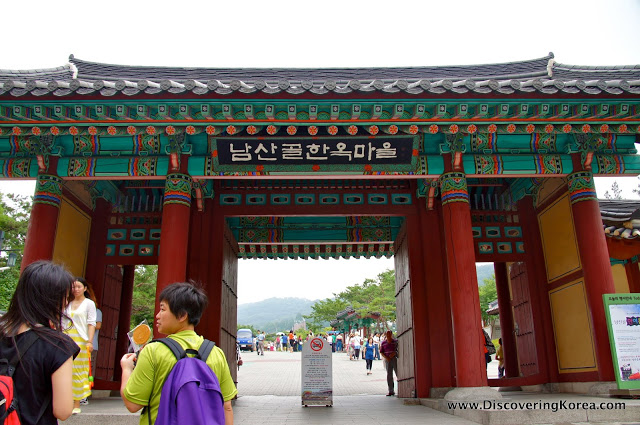
Although you’re almost sure to hear Japanese, Thai and English spoken by those present, what’s most notable in recent years are the large buses packed with Chinese tourists.
The so-called village is actually comprised of just five traditional style hanok (한옥) homes. A small village to be sure, but a beautiful one nevertheless.
These homes include four original structures that were moved there from other parts of Seoul, as well as a faithful reproduction of a home that was simply too fragile to be relocated.
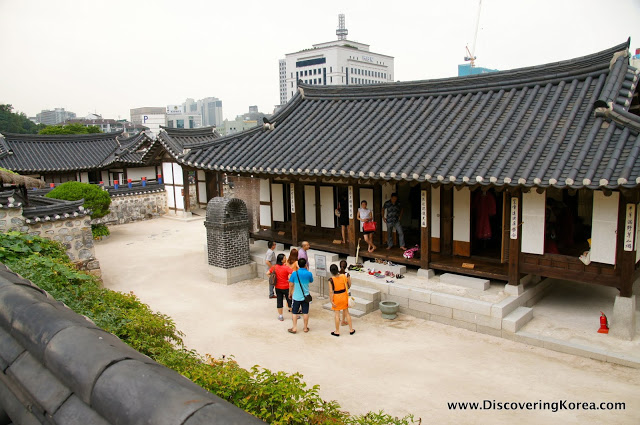
Among them, all are wonderful examples of upper-class residences from Korea’s Joseon era. For example, these traditional Korean mansions typically feature anchae or inner quarters and sarangchae or outer quarters, as well as haengnangchae or servants’ quarters.
Details, such as the height and shape of the roofs, denote each structure’s importance to the residential complex.
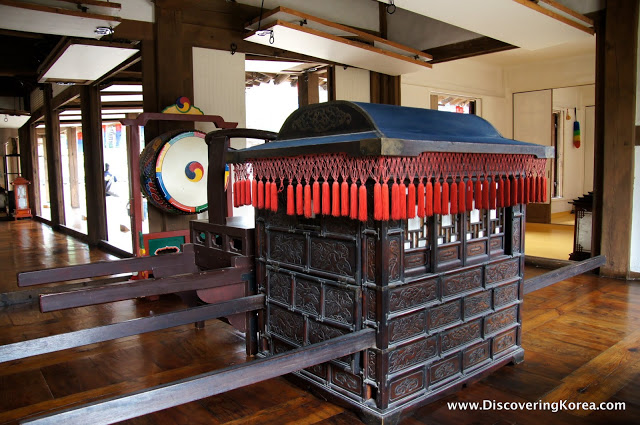
I was surprised to discover that two of the homes in Namsangol Hanok Village have connections to Korea’s royal family. Yun Taekyeong’s (윤택영) Jaesil house was moved to the park from Jegi-dong (제기동) in Dongaemun-gu district.
It is presumed to have been built by the father of Korea’s last empress, who became the crown princess in 1906. The house was moved in 1998 when Namsangol Hanok Village was established.
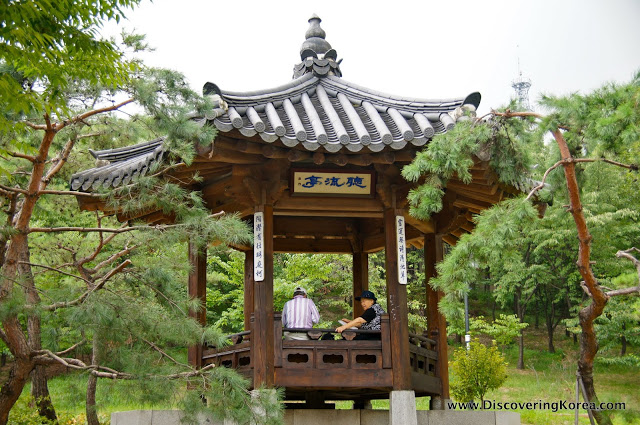
The classic homes comprise only a small part of the entire Namsangol Hanok Village park. Beyond them is a large pond, called Cheonghak-ji (청학지), which is fed by a stream that starts at the rear gate and winds its way through the park.
The grounds also include the Seoul Millennium Time Capsule. To mark Seoul’s 600th anniversary as the capital of Korea, 600 items thought to best represent the city were buried to be opened on November 29, 2394, which will mark the city’s 1,000th anniversary.

One of my favorite park activities, however, is simply watching the artisans who practice their traditional craft on site. For example, on my last visit, two elderly gentlemen sat for hours practicing their straw craft.
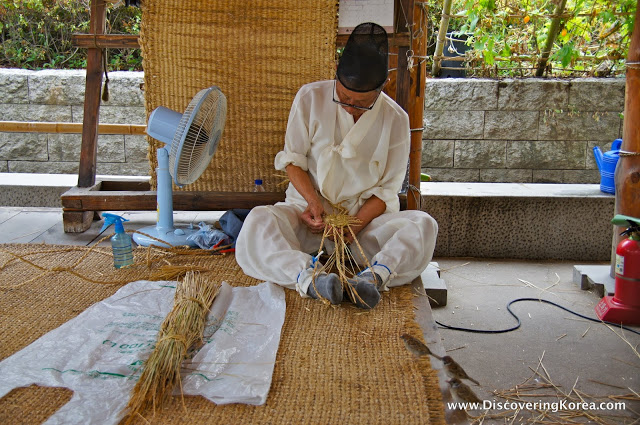
Once a vitally important skill in Korea’s rural communities, useful items like baskets, bags, and jipshin shoes were all made from woven straw. As part of the Namsangol Hanok Village Cultural Experience program, a small crowd gathered to watch these wrinkled, yet dexterous hands weave pieces of straw as greedy birds waited for a snack.
And finally, one of Namsangol Hanok Village’s most popular attractions is the Seoul Namsan Gugakdang (서울 남산 국악당).
A theater that specializes in Korean traditional music, it’s a top destination for music and culture lovers who want to attend performances, lectures and other programs in a beautiful hanok facility inside Seoul’s central mountain park.
For Your Information..
| Open: | 09:00-21:00 (summer), 09:00-20:00 (winter), Closed Tuesdays |
| Admission Price: | Free |
| Address: | Seoul Jung-gu Pil-dong 1(il)-ga 84-1 |
| Directions: | Chungmuro Station (#331/#423) on Lines 3 & 4, Exit 3 |
| Phone: | 02-2266-6923 |
| Website: |
About Matt Kelley
Matt Kelly is native of the US Pacific Northwest and is half-Korean by ethnicity. He lived in Korea for five years and has written hundreds of travel guides for Wallpaper, TimeOut, the Boston Globe and Seoul Magazine and was a host for several different variety shows on Korean radio and television.
